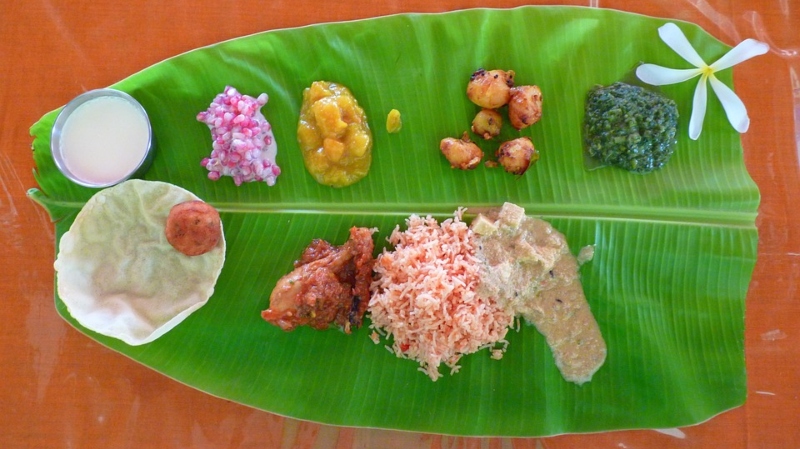
Eating on banana leaf is time-honored tradition in India
When you serve food on banana leaf, it gets nutritional boost
Banana leaf has wax-like coating that repels dirt and dust
Eating on a banana leaf is a time-honored tradition in India, especially in the southern regions.
Not only is it considered healthy and auspicious, but it’s also an integral part of festivals and family gatherings.
These leaves hold a sacred place in our culture, often used to offer prasad to deities. Plus, they’re just the right size to accommodate a full South Indian feast, from sambhar to chutneys.
But it’s not just about tradition; there’s science behind it too. Banana leaves are a treasure trove of nutrients. When you serve food on them, it gets a nutritional boost you might miss out on otherwise.
These leaves are rich in polyphenols, those natural antioxidants also found in green tea and many plant-based foods. When you dine on banana leaves, your meal soaks up these polyphenols, which are believed to help fend off lifestyle diseases. They even have antibacterial properties that can potentially safeguard your food from harmful germs.
Speaking of hygiene, eating off banana leaves is a pretty smart choice. Unlike regular utensils that need a good scrub with soap, there’s always a risk of some soapy residue lingering, which could end up in your meal.
Banana leaves, on the other hand, come with a wax-like coating that repels dirt and dust, keeping your food clean and uncontaminated. Plus, they add a subtle, earthy flavor to your dishes, enhancing the overall dining experience.
So, the next time you’re offered a meal on a banana leaf, know that it’s not just tradition; it’s a healthier, more hygienic, and tastier way to enjoy your food!

Eating on banana leaf is time-honored tradition in India
When you serve food on banana leaf, it gets nutritional boost
Banana leaf has wax-like coating that repels dirt and dust
Eating on a banana leaf is a time-honored tradition in India, especially in the southern regions.
Not only is it considered healthy and auspicious, but it’s also an integral part of festivals and family gatherings.
These leaves hold a sacred place in our culture, often used to offer prasad to deities. Plus, they’re just the right size to accommodate a full South Indian feast, from sambhar to chutneys.
But it’s not just about tradition; there’s science behind it too. Banana leaves are a treasure trove of nutrients. When you serve food on them, it gets a nutritional boost you might miss out on otherwise.
These leaves are rich in polyphenols, those natural antioxidants also found in green tea and many plant-based foods. When you dine on banana leaves, your meal soaks up these polyphenols, which are believed to help fend off lifestyle diseases. They even have antibacterial properties that can potentially safeguard your food from harmful germs.
Speaking of hygiene, eating off banana leaves is a pretty smart choice. Unlike regular utensils that need a good scrub with soap, there’s always a risk of some soapy residue lingering, which could end up in your meal.
Banana leaves, on the other hand, come with a wax-like coating that repels dirt and dust, keeping your food clean and uncontaminated. Plus, they add a subtle, earthy flavor to your dishes, enhancing the overall dining experience.
So, the next time you’re offered a meal on a banana leaf, know that it’s not just tradition; it’s a healthier, more hygienic, and tastier way to enjoy your food!
